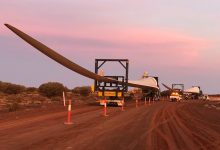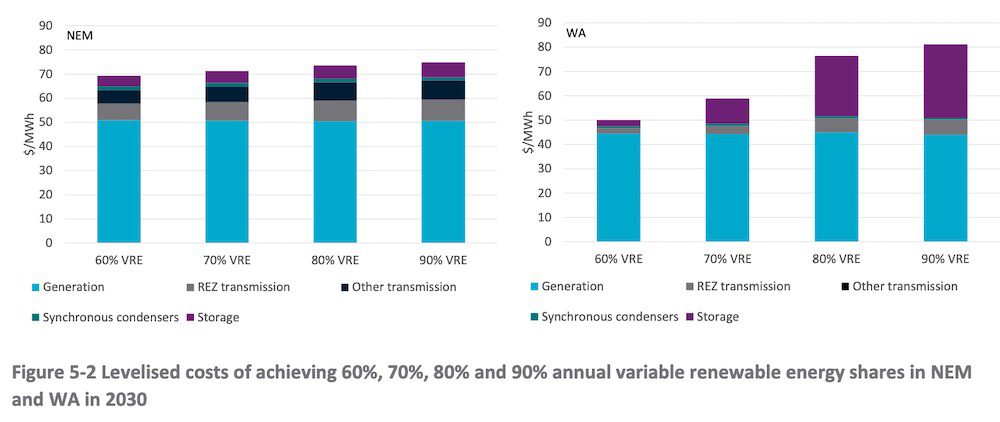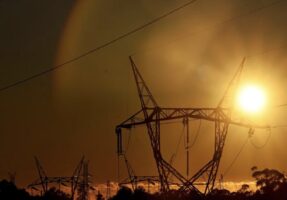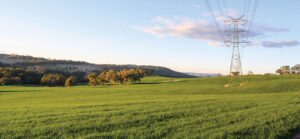The latest report from the Intergovernmental Panel on Climate Change on the state of the world’s climate was depressing and alarming, as was widely expected. But it does offer hope.
The world has had plenty of warning but has done little to avert potentially catastrophic warming. If it finally chooses to act, there is still a small window of opportunity, and the good news it that it does have the tools at its disposal.
Or, as ANU’s Frank Jotzo phrased it, the world is “up the creek”, but it does have a paddle. Actually, it’s got a few paddles and they are the ones that we have known about for some time: Solar, wind, energy efficiency, electrification, protection of forests and improved agriculture.
This graph below published in the IPCC report, and included in our main coverage on Tuesday, is worth repeating, because it puts the lingering debate about energy options in Australia in sharp relief.
The biggest paddles are solar and wind. Solar, according to the IPCC report, can deliver more emission cuts than any other technology by 2030, when the world needs to have cut its emissions by at least half if it is to have any chance of capping average global warming at 1.5°C.
Solar and wind together offer nearly ten times the emission cut potential than nuclear, and 20 times that of carbon capture.
In Australia, this needs to be remembered as the energy debate inevitably veers towards the old fossil fuel lobby favourites of nuclear and CCS, particularly after the signing of the outrageously expensive Aukus subs deal.
Australia has been willing to commit nearly $1 trillion on other near term crises over the last three years – the pandemic, the China security threat, and the cash flows of the rich (the promised tax cuts) – so, as Daniel Bleakley wrote earlier this week, it should stand prepared to do something similar on climate.
It won’t cost nearly as much. And it will cost a lot less than the alternative emission reduction technologies.
An important part of the table above is the colouring of the abatement. Blue means that the costs are lower than the reference technology, or business as usual.
In short, that means that wind and solar are cheaper than fossil fuel technologies. More than half the abatement of wind and solar can be met at zero cost. The only other technologies that can produce this sort of result are the various forms of efficiency – in vehicles, appliances, shipping and demand management.
The most expensive technologies are coloured dark red. In the energy sphere, that represents the bulk of emission abatement in carbon capture, bioenergy and fuel switching in industrial purposes.
In Australia, this is very much the case, thanks to the country’s rich natural resources in wind and solar.
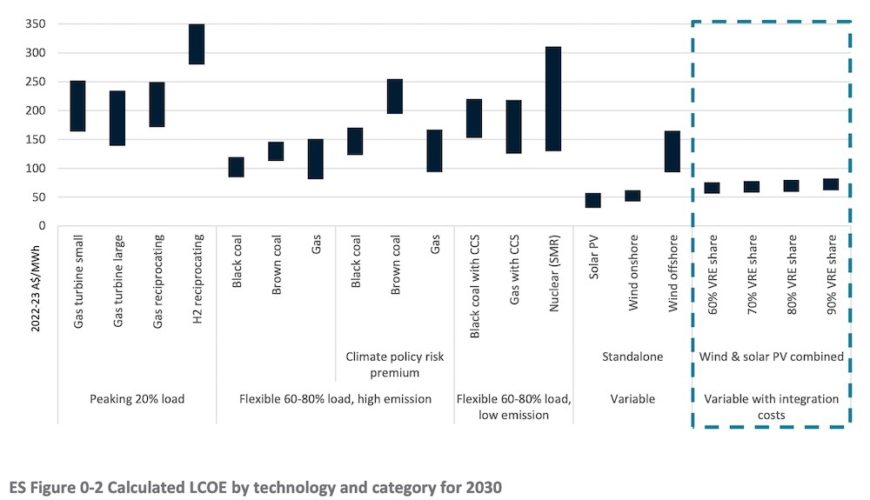
The detailed annual analysis produced by the CSIRO and the Australian Energy Market Operator have told us repeatedly that wind and solar are the cheapest options, even if you add in storage and transmission costs and very high levels of renewables.
There is simply no contest. And wind and solar will not just deliver rapid emissions cuts on the grid, they will feed through to the electrification of transport, homes, and industry, and help deliver more cuts in hard to abate industrial processes.
Yet the conservative media (which now accounts for the majority of media in Australia) and the federal Coalition opposition insist that Australia should be going nuclear, a call that will amplified in the wake of the deal to invest in nuclear submarines.
But like the subs, nuclear power is absurdly expensive and decades away. The thrust of the IPCC report is the urgency of the task – to keep average global warming within 1.5°C requires deep, rapid, and immediate emissions cuts.
That can only be done with technologies that are availably now. The IPCC report insists that global emissions can be at least halved by 2030, at manageable costs.
“It must be done. It can be done,” say Jotzo and fellow ANU climate expert and Mark Howden, who also worked on the IPCC report. “By and large, we know how to do it – and it makes economic sense to do so. In this report, the governments of the world have acknowledged as much.”

